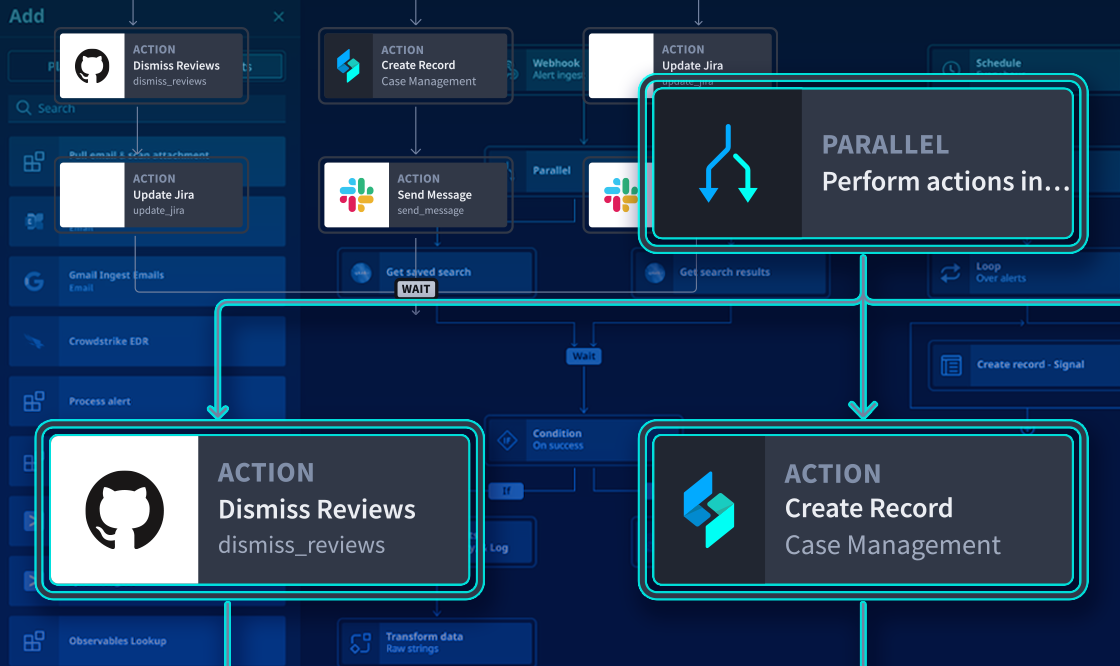The security vendor landscape is always consolidating but will never be consolidated. There is no such thing as a one-size-fits-all technology stack. As a result, 32% of companies have 31 or more standalone security products, making it difficult for organizations to gain visibility against cyberattacks. Security automation technology is a critical enabler that helps security operations (SecOps) teams keep pace with threats. There are many different types of automation options, but not all are created equal. This is particularly true when it comes to the quality of integrations. When evaluating the total cost of ownership of various security automation platforms, it’s crucial to compare the time to value and ongoing developer resources needed to manage a solution. After all, the true efficacy of a security automation solution lies in its ability to minimize the complexities.
Keep reading this post to unpack the key criteria and considerations for evaluating the quality of integrations that a security automation vendor can support.
The Reality of Integrations: 4 Tips You Should Know
How to Overcome the API Maze
When pre-built integrations don’t exist, it means that you are left with the burden of building and maintaining integrations. This requires building countless custom connectors, which often involves sifting through documentation to identify the specific API endpoints necessary for extracting desired data. With thousands of endpoints to choose from, your developers face the daunting task of pinpointing the right ones, a process that requires not only time but also a deep understanding of the intricacies of each API.
To overcome this API maze, look for a vendor who offers unlimited integrations. This choice will greatly simplify your automation journey, eliminating the need for extensive API expertise. You can achieve real-time integration with any REST API, seamlessly applying business logic to enhance playbook execution through a user-friendly no-code integration experience. Effortlessly connect and extract meaningful data without the requirement for coding.
How To Easily Define Complex Business Logic
Navigating integration complexities, especially defining intricate business logic, often proves to be challenging. Many organizations struggle with the need for specialized expertise like JSON proficiency to articulate complex logic within connectors. This reliance on technical skills can lead to bottlenecks, impeding the agility required for adapting to evolving business needs. Vendor-specific intricacies further complicate matters, making it challenging for organizations to maintain a cohesive integration environment.
The adoption of native transforms within playbooks emerges as a transformative solution. With the centralization of business logic within native transforms, you are no longer required to be experts in complex data formats like JSON. This not only democratizes the integration process but also streamlines the orchestration of workflows. The vendor-agnostic nature of native transforms ensures seamless compatibility across various platforms, reducing dependencies and facilitating a more agile and scalable integration environment. The transparency and user-friendly design of native transforms enhance collaboration and maintainability, enabling you to navigate the complexity of integrations with ease and efficiency.
How to Connect Ever-evolving Security Landscape
APIs are always evolving and endpoints frequently change or get deprecated. This makes maintaining custom connectors challenging, time-consuming, and resource-intensive. Be cautious of security automation integrations that lack the agility to adapt to API changes because this can cause disruptions and data inconsistency nightmares.
Skip the burden of connector maintenance by selecting a vendor who proactively updates connectors seamlessly. This hands-off strategy not only saves time and resources but also boosts the reliability of integrations. You can now prioritize leveraging data without the complexities of connector upkeep.
How Critical Vendor Support is
In the ever-changing security landscape, inadequate support from vendors can transform the seemingly straightforward task of integration into a labyrinth of challenges. If you can’t rely on vendors for support, you may find yourself grappling with the complexities of adapting custom connectors to evolving APIs, and find yourself stuck in a cycle of perpetual adaptation.
When a vendor provides unlimited integrations, it shows a dedicated commitment to trust and collaboration. The ability to downloadable directly from an in-app marketplace ensures that you get maximum benefits from ecosystem-agnostic orchestration solutions for any security function.
Introducing Swimlane Turbine Autonomous Integrations
We believe you should be allowed to integrate with anything. Swimlane Turbine’s Autonomous Integrations offer an ecosystem-agnostic orchestration solution that greatly reduces the need for developer resources. Turbine empowers SecOps teams to navigate the integration landscape with ease and efficiency by abstracting business logic into components, enabling no-code integration, and emphasizing vendor partnerships over custom builds.


Request a demo
See how Swimlane Turbine can help you and your SecOps team integrate with any REST API by requesting a demo below.

